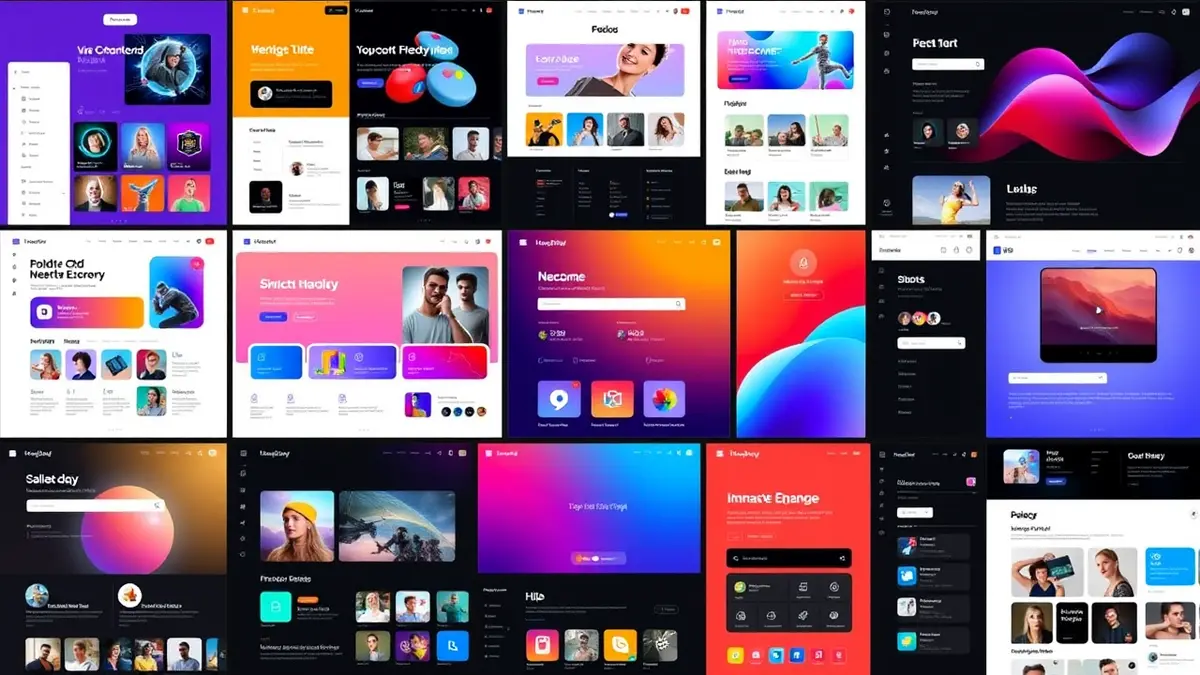
UI/UX Design Trends: Stay Updated
UI/UX Design Trends: Stay Updated
The world of product design is constantly evolving. To stay ahead of the curve, it's crucial to keep an eye on emerging UI/UX design trends. This post will guide you through some of the most important developments shaping the user experience landscape right now. Whether you're a freelancer, startup founder, or small business owner, understanding these trends can help you create more engaging and effective digital products.
Immersive Experiences with AR/VR
Augmented Reality (AR) and Virtual Reality (VR) are no longer futuristic fantasies; they are becoming increasingly integrated into everyday experiences. Think about interactive product previews using AR filters on social media or virtual tours of properties.
- Key takeaway: Design immersive experiences that add value and solve real-world problems.
- Focus: Prioritize user comfort and accessibility when designing for AR/VR.
- Example: Furniture companies allowing customers to visualize products in their homes using AR apps.
Microinteractions and Delightful Details
Small animations and feedback cues, known as microinteractions, can significantly enhance the user experience. These subtle details create a sense of responsiveness and make interactions more enjoyable.
- Key takeaway: Pay attention to the little things; they can have a big impact.
- Focus: Use microinteractions to guide users and provide clear feedback.
- Example: A loading bar that transforms into a celebratory animation upon completion.
Inclusive and Accessible Design
Accessibility isn't just a nice-to-have; it's a necessity. Designing for inclusivity means considering users of all abilities and backgrounds.
- Key takeaway: Make your products accessible to everyone.
- Focus: Adhere to accessibility guidelines (WCAG) and conduct usability testing with diverse users.
- Example: Providing alternative text for images and ensuring sufficient color contrast.
Why is Inclusive Design Important?
Inclusive design isn't just ethical, it's also good for business. By expanding your reach to a wider audience, you can increase your customer base and improve brand loyalty.
Neomorphism and Glassmorphism
These design styles focus on creating a soft, almost tangible interface. Neomorphism uses subtle shadows and highlights to create a raised or inset effect, while glassmorphism mimics the look of frosted glass.
- Key takeaway: Experiment with these styles to create visually appealing interfaces.
- Focus: Use these styles sparingly and ensure readability.
- Example: Icons with subtle shadows and highlights that mimic physical buttons (Neomorphism).
Data Visualization and Storytelling
Presenting data in a clear and engaging way is crucial for effective communication. Using charts, graphs, and interactive visualizations can help users understand complex information quickly.
- Key takeaway: Turn data into compelling stories.
- Focus: Use appropriate visualization techniques for different types of data.
- Example: Interactive dashboards that allow users to explore data at different levels.
AI-Powered Design Tools
Artificial intelligence is transforming the design process. AI-powered tools can automate repetitive tasks, generate design ideas, and provide personalized recommendations.
- Key takeaway: Embrace AI to streamline your workflow.
- Focus: Use AI tools to augment your creativity, not replace it.
- Example: AI-powered tools that generate color palettes or suggest layout options.
The Future of UI/UX
Staying updated on these UI/UX design trends is essential for creating impactful and user-friendly products. By embracing these advancements and continuously learning, you can create experiences that resonate with your audience and drive business success. The key is to remember that design is not just about aesthetics; it's about solving problems and creating value for users.


